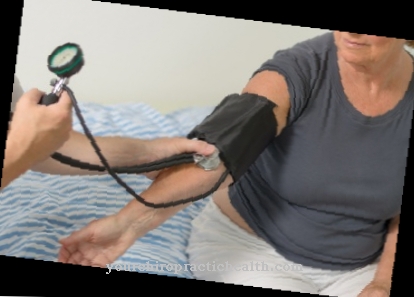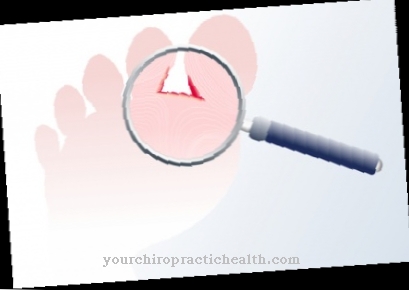With the active ingredient Naftifin it is a drug with an antifungal effect. The substance belongs to the group of allylamine derivatives. The compound also has antibacterial and anti-inflammatory effects. The antifungal effect of the substance naftifine is due to the reduction in the structure of cell membranes in fungi. For this reason, naftifine is primarily used for external fungal infections.
What is naftifine?

The drug naftifine is used in the majority of cases as an antifungal agent, i.e. it is used to treat fungal infections, for example on the skin.
The substance naftifine is an allylamine derivative and also a broad spectrum antifungal agent. For example, it is used topically to treat dermatophytes.
From a chemical point of view, naftifine is an allylamine. In addition, naftifine is one of the so-called aromatic hydrocarbon compounds. The compounds, which consist of benzene rings, are connected to one another by a nitrogen bridge. Naftifine hydrochloride is primarily used in pharmacy. This substance has a melting point of around 177 degrees Celsius.
Naftifine as a free molecule appears as a viscous and oily substance at room temperature. In combination with hydrochloride, naftifine is a solid.
Pharmacological effect
The active ingredient naftifine is usually used externally for fungal diseases. Naftifin is one of the so-called allylamines. For this reason, like other types of allylamines, the drug inhibits a significant enzyme in fungi. This enzyme is squalene epoxidase. As a result, the development of the cell walls of the fungi is inhibited.
In addition, a special starting material, so-called squalene, accumulates in the tissue of the fungus. This substance kills the majority of the fungi.
Basically, naftifine is an antifungal agent with a very broad spectrum of pathogens. For this reason, naftifine is also effective against dermatophytes such as yeast, Epidermophyton floccosum and mold. Laboratory studies have also shown that the substance naftifine also has anti-allergic and anti-inflammatory effects.
In addition, naftifine affects the growth and reproduction of various types of bacteria. This makes the drug suitable for treating mixed infections caused by fungi and bacteria.
Unlike the azole antifungal drugs, naftifine does not reduce lanosterol demethylase. If naftifine is used to treat nail fungus, the substance is combined with urea in the majority of cases. Because urea causes the nail to soften. This will improve the antifungal effects of the drug. If a nail fungus is present, the use of a gel with naftifin is recommended.
Medical application & use
Naftifin is used as part of the localized therapy for skin infections with fungi. Possible indications are, for example, athlete's foot or nail fungus.
The active ingredient naftifine is commercially available in the form of gels, sprays, creams or as a solution. The duration of therapy is on average around two to four weeks. If there is a fungal nail infestation, longer therapy periods are usually necessary, which usually extend over at least six months. If the symptoms do not improve in the first four weeks, the diagnosis should be re-examined by the attending physician.
If there is an acute inflammatory skin infection due to fungal attack, naftifine is sometimes used together with zinc oxide or anti-inflammatory glucocorticoids. The aim is to support the wound healing of the diseased skin.
In principle, the active ingredient naftifine can be used if it is necessary to inhibit fungal growth on skin and nail areas or if the fungi are to be killed. In addition, the medicinal substance can also be used if the aim is to relieve itching in the context of fungal infections on the skin.
Naftifine also reduces the healing time for skin and nail infections caused by fungal infections. In addition, the active ingredient is able to reduce inflammatory reactions that occur on the skin together with fungal infections. The drug naftifine is generally used topically and locally. In addition to gels and creams, lotions or ointments can also be considered as dosage forms.
Risks & side effects
When using the active ingredient naftifine, there are sometimes undesirable side effects. For example, it can lead to burning and itching of the skin. In addition, dry areas of the skin as well as rashes and reddening of the skin are possible.
In most cases these side effects will go away on their own after a few days. Otherwise, the attending physician should be consulted urgently. In rare cases, hypersensitivity reactions occur. Treatment with naftifine should be avoided in the case of open wounds, diseased mucous membranes or eyes. Children under the age of twelve are also not allowed to use the active ingredient naftifine.













.jpg)

.jpg)
.jpg)











.jpg)